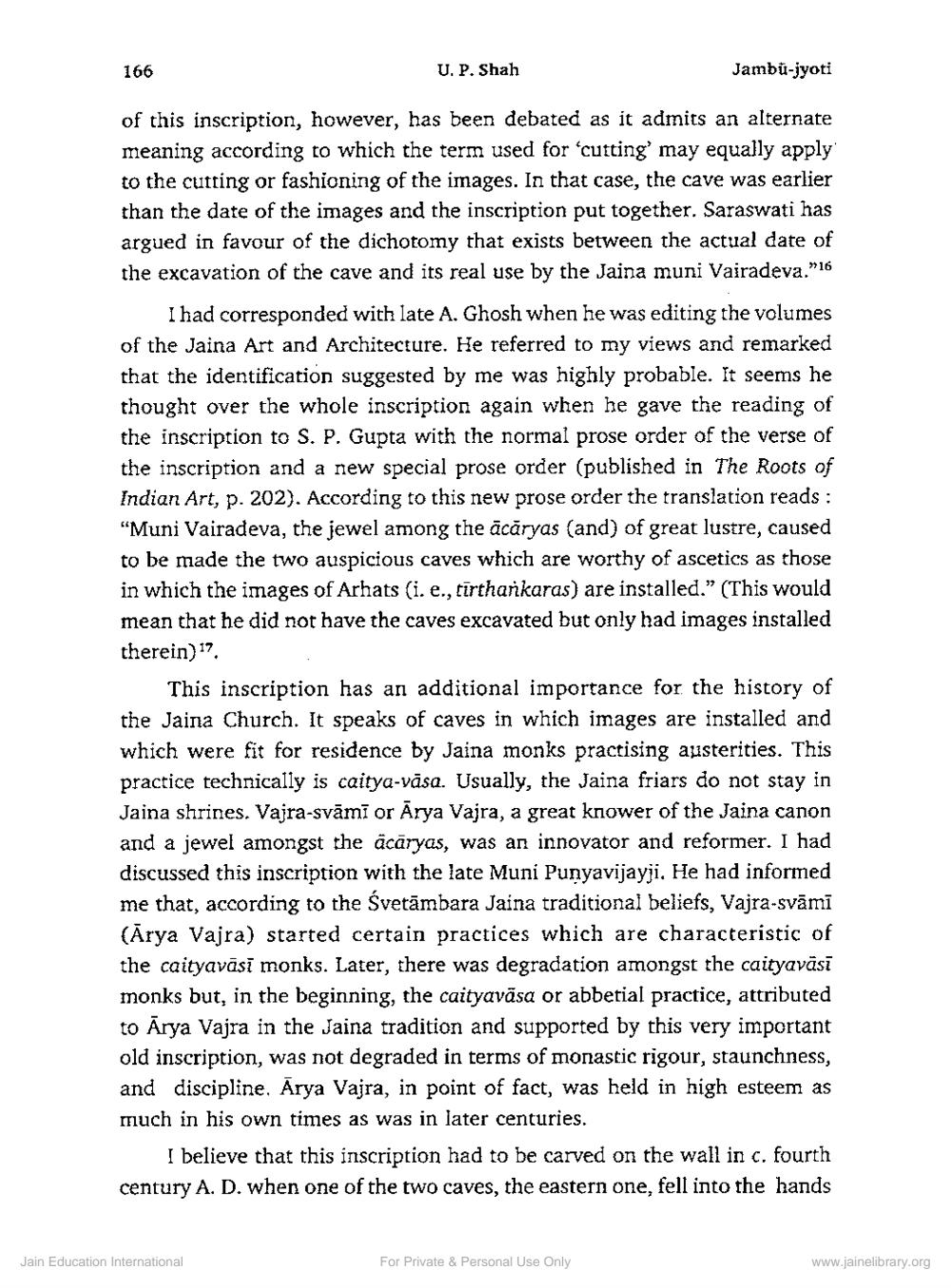________________
166
Jambu-jyoti
of this inscription, however, has been debated as it admits an alternate meaning according to which the term used for 'cutting' may equally apply to the cutting or fashioning of the images. In that case, the cave was earlier than the date of the images and the inscription put together. Saraswati has argued in favour of the dichotomy that exists between the actual date of the excavation of the cave and its real use by the Jaina muni Vairadeva."16
U. P. Shah
I had corresponded with late A. Ghosh when he was editing the volumes of the Jaina Art and Architecture. He referred to my views and remarked that the identification suggested by me was highly probable. It seems he thought over the whole inscription again when he gave the reading of the inscription to S. P. Gupta with the normal prose order of the verse of the inscription and a new special prose order (published in The Roots of Indian Art, p. 202). According to this new prose order the translation reads: "Muni Vairadeva, the jewel among the ācāryas (and) of great lustre, caused to be made the two auspicious caves which are worthy of ascetics as those in which the images of Arhats (i. e., tirthankaras) are installed." (This would mean that he did not have the caves excavated but only had images installed therein) 17.
This inscription has an additional importance for the history of the Jaina Church. It speaks of caves in which images are installed and which were fit for residence by Jaina monks practising austerities. This practice technically is caitya-vāsa. Usually, the Jaina friars do not stay in Jaina shrines. Vajra-svāmī or Ārya Vajra, a great knower of the Jaina canon and a jewel amongst the äcāryas, was an innovator and reformer. I had discussed this inscription with the late Muni Punyavijayji. He had informed me that, according to the Śvetambara Jaina traditional beliefs, Vajra-svāmī (Arya Vajra) started certain practices which are characteristic of the caityavāsī monks. Later, there was degradation amongst the caityavāsī monks but, in the beginning, the caityavāsa or abbetial practice, attributed to Arya Vajra in the Jaina tradition and supported by this very important old inscription, was not degraded in terms of monastic rigour, staunchness, and discipline. Arya Vajra, in point of fact, was held in high esteem as much in his own times as was in later centuries.
I believe that this inscription had to be carved on the wall in c. fourth century A. D. when one of the two caves, the eastern one, fell into the hands
Jain Education International
For Private & Personal Use Only
www.jainelibrary.org




